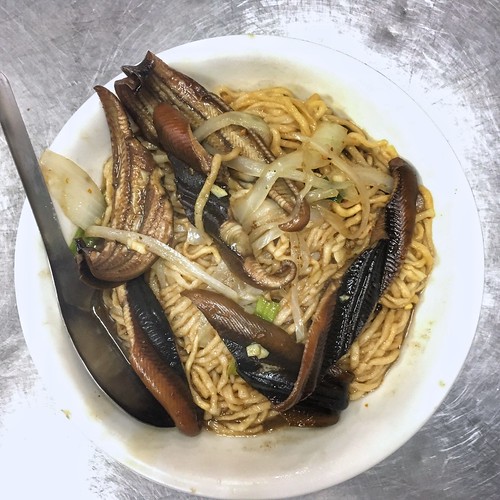We performed additional experiments to test the speculation that CD133-LV selectively transduces CD133+ GBM cells in vitro. We transduced primary human GBM cultures (GBML20 whose CD133+ material is sixty eight.four.8%) with TagBFPexpressing CD133-LV or VSVG-LV to measure the expression of TagBFP amongst CD133+ GBM cells by flow cytometry three times right after infection (Fig. 2A). Our analyses revealed that 98.two.8% of CD133-LV – transduced  GBML20 cells were CD133+. In contrast, GBML20 cells transduced with VSVG-LV confirmed high transduction prices with no predilection for the CD133+ cohort (70..2% CD133+ cells between transduced cohort, t-check, p,.0003 n53) (Fig. 2A, Bi). Without a doubt, the enrichment (enrichment5observed/predicted fraction) of CD133+ cells between TagBFP+ transduced cells was 71.two. -fold, as opposed to 1.six.2 fold in VSVG-LV – infected GBML20 cells (t-test, p,.0001, n53) (Fig. 2Bii), suggesting that CD133-LV has restricted tropism toward CD133+ cells. To affirm the findings with GBML20, we recurring the identical experiments with GBML8 (CD133 material is forty six.5.7%) (S5A Fig.). 1-NA-PP 1 hydrochloride customer reviews Related to GBML20, we noticed that ninety four.9.4% of CD133-LV – transduced cells in GBML8 have been CD133+ (n53), whilst CD133+ cells represented only 44.one.seven% of all VSVGLV – transduced cells (n53 t-take a look at, p,.0001) (S5B Fig.). We located substantial enrichment of CD133+ cells inside of the TagBFP+ transduced populace with CD133-LV (twenty..four old as opposed to 1.1. with VSVG-LV t-take a look at, p,.02, n53) (S5C Fig.). To show that transduction is mediated by this interaction, we handled our GBM cells with escalating quantities of an antibody recognizing the exact same epitope as the CD133-LV viral envelope protein (293C3, blocking antibody), or with an antibody that acknowledges a different epitope on CD133 (AC133, non-blocking antibody) and measured transduction performance with CD133-LV by movement cytometry (Fig. 2C). These experiments exposed a far more than 50% reduction in transduction effectiveness with CD133-LV on remedy with blocking antibody7870182 (ANOVA F1,155100.276, p,1027), whilst remedy with non-blocking antibody had no significant result on transduction performance (Fig. 2C). If CD133-LV is selectively tropic toward CD133+ GBM cells, it follows that escalating or lowering the stage of CD133 expression in primary cultures ought to influence transduction effectiveness appropriately. To check this speculation, we modified the CD133 content material of principal GBM traces with lentiviral constructs possibly overexpressing PROM1 cDNA or expressing shRNA constructs concentrating on PROM1 mRNA transcripts. GBML20, a principal culture with higher CD133+ mobile articles (sixty eight.4.8%, n53 measurements) was transduced with a lentivirus expressing an shRNA towards CD133 (shRNA-LV). In a management experiment, we transduced GBML20 cells with a lentivirus expressing a scramble shRNA sequence with no predicted mRNA targets (Fig. Second). Circulation cytometry of GBML20 cells modified to convey shRNA or scramble shRNA indicated that the percentage of CD133+ cells reduced dramatically to two..six% (n53) when shRNA in opposition to CD133 was expressed, but remained large (twenty five.4.six%, n53), when the scramble shRNA sequence was employed (t-take a look at, p,.001) (Fig. 2Di,ii).
GBML20 cells were CD133+. In contrast, GBML20 cells transduced with VSVG-LV confirmed high transduction prices with no predilection for the CD133+ cohort (70..2% CD133+ cells between transduced cohort, t-check, p,.0003 n53) (Fig. 2A, Bi). Without a doubt, the enrichment (enrichment5observed/predicted fraction) of CD133+ cells between TagBFP+ transduced cells was 71.two. -fold, as opposed to 1.six.2 fold in VSVG-LV – infected GBML20 cells (t-test, p,.0001, n53) (Fig. 2Bii), suggesting that CD133-LV has restricted tropism toward CD133+ cells. To affirm the findings with GBML20, we recurring the identical experiments with GBML8 (CD133 material is forty six.5.7%) (S5A Fig.). 1-NA-PP 1 hydrochloride customer reviews Related to GBML20, we noticed that ninety four.9.4% of CD133-LV – transduced cells in GBML8 have been CD133+ (n53), whilst CD133+ cells represented only 44.one.seven% of all VSVGLV – transduced cells (n53 t-take a look at, p,.0001) (S5B Fig.). We located substantial enrichment of CD133+ cells inside of the TagBFP+ transduced populace with CD133-LV (twenty..four old as opposed to 1.1. with VSVG-LV t-take a look at, p,.02, n53) (S5C Fig.). To show that transduction is mediated by this interaction, we handled our GBM cells with escalating quantities of an antibody recognizing the exact same epitope as the CD133-LV viral envelope protein (293C3, blocking antibody), or with an antibody that acknowledges a different epitope on CD133 (AC133, non-blocking antibody) and measured transduction performance with CD133-LV by movement cytometry (Fig. 2C). These experiments exposed a far more than 50% reduction in transduction effectiveness with CD133-LV on remedy with blocking antibody7870182 (ANOVA F1,155100.276, p,1027), whilst remedy with non-blocking antibody had no significant result on transduction performance (Fig. 2C). If CD133-LV is selectively tropic toward CD133+ GBM cells, it follows that escalating or lowering the stage of CD133 expression in primary cultures ought to influence transduction effectiveness appropriately. To check this speculation, we modified the CD133 content material of principal GBM traces with lentiviral constructs possibly overexpressing PROM1 cDNA or expressing shRNA constructs concentrating on PROM1 mRNA transcripts. GBML20, a principal culture with higher CD133+ mobile articles (sixty eight.4.8%, n53 measurements) was transduced with a lentivirus expressing an shRNA towards CD133 (shRNA-LV). In a management experiment, we transduced GBML20 cells with a lentivirus expressing a scramble shRNA sequence with no predicted mRNA targets (Fig. Second). Circulation cytometry of GBML20 cells modified to convey shRNA or scramble shRNA indicated that the percentage of CD133+ cells reduced dramatically to two..six% (n53) when shRNA in opposition to CD133 was expressed, but remained large (twenty five.4.six%, n53), when the scramble shRNA sequence was employed (t-take a look at, p,.001) (Fig. 2Di,ii).
